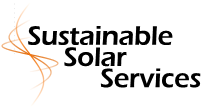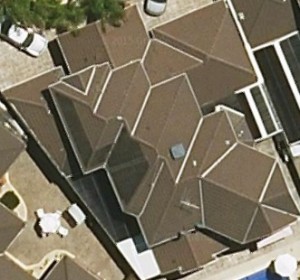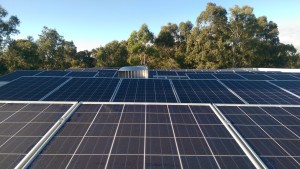Do Micro-inverters or Optimisers perform better than String inverters?
Micro-inverters and optimisers deploy an alternative system design philosophy to the more widely utilised string inverter. They were developed to overcome shortcomings with the string inverter. As such, under certain circumstances they can employ solar panels to superior effect, harvesting more power from the sun.
Multi directional solar array
The typical residential scale string inverter being installed in Australia today is of the order of 5kW in rated AC power output. These units have at most two maximum power point trackers (MPPTs) integral to them.
MPPTs are used to maximise the power output from the solar panels by setting the output voltage to the level that corresponds to maximum panel output. An inverter with two MPPTs has the limitation that it can have a maximum of two strings of panels (a group of panels wired together in a ‘daisy chain’ format) pointed in different directions. So for instance, if there were a building with sufficiently large West facing and East facing roof spaces, such a string inverter would be able to accommodate a string of panels on each roof through each MPPT.
Ideally however, it would not have both strings on the same MPPT circuit because the panels on the East facing roof would reach their maximum output earlier in the day than those on the West. Since the MPPT sets the same voltage for every panel in the string, it would set the wrong voltage for both West and East facing panels causing the Eastern half to under produce in the morning and the Western half to under produce in the afternoon. This would be a poorly performing solar system. It is usually possible to install 5kW worth of solar panels on the typical Australian residence while accommodating the two direction limitation.
Nevertheless, in some situations with complex multi-faceted roof structures where there is insufficient space on any one or two facets to install a large enough system to meet the building’s required power, there is a use case for micro-inverters or optimisers.
This is because both micro-inverter systems and solar panels with optimisers have independent MPPTs for every panel in the solar system. This allows every single panel’s output to be maximised throughout the day, no matter what direction it is facing. In such a scenario string inverters would give inferior results to their counterparts.
Partial panel shading
Shading of solar panels can lead to a dramatic loss of power output. As mentioned previously, panels in each string are wired in a daisy chain (series) in the string inverter solar system. This means that they have one common wire between them with an electric current flowing through it. Shading of any part of any single panel in the string has the effect of raising the electrical resistance in that panel greatly. This leads to a large drop in the current flowing through the panel. Since the same current is flowing through every panel in the string, this means that every other panel in the string would also be producing sub-optimal power, even if they are unshaded.
Such a partial panel shading occurrence is a use case for micro-inverters or optimisers.
Unlike with string inverters, micro-inverters and optimisers are wired in parallel. This means that in effect, each panel is operating on an independent electrical circuit and shading of any single panel has no effect on the others. It should be stressed that there is only improved power output over the string inverter system when there is partial shading of the solar panels. If the shading is large enough to cover all the panels in the solar array, the power output would be much the same as for a string inverter system.
System overall efficiency
Micro-inverters are less efficient at power production than string inverters when they are connected to an array of panels pointing in a single direction with no shading issues. As previously mentioned, the typical Australian residential solar install is for a 5kW single phase system. Comparing the data sheets of a market leading manufacturer of micro-inverters, with that of a good string inverter, it can reasonably be assumed that the overall efficiency (the product of the Euro efficiency and the MPPT conversion efficiency) of a micro-inverter is at least 1% lower. This leads to a substantial difference in power output over the 25 year lifetime of a solar panel array.
Optimisers differ from micro-inverters in that they have MPPTs attached to every panel in the solar array which then feed the maximised panel output into a single central inverter while micro-inverter systems have an inverter (with MPPT integrated) on every single panel in the solar array. Once again, comparing the product of the Euro efficiency and the MPPT conversion efficiency of a leading manufacturer of optimiser systems with the overall efficiency of the string inverter tells us that there is little difference in the power output between the two under conditions of no shading and a uni-directional solar array.
Cost
Having installed both commercial and residential scale solar systems under a variety of conditions, Sustainable Solar Services has a good understanding of the cost difference between string inverter solar systems and micro-inverter or optimiser systems.
Assuming all other costs to be equal on a 5kW rooftop solar installation, in our experience, the premium in pricing for the micro-inverter system components is of the order of 10% relative to a string inverter system. For the optimiser system, it is roughly 13%. This assumes that component supplier costs are passed through to the final consumer and that unscrupulous installers do not have an extra profit margin added to the price of micro-inverter or optimiser systems for their ‘superior’ power production capabilities.
Many utility scale photovoltaic plants in the US have been installed with optimiser systems. The additional cost of these systems can be justified because solar arrays in such cases are large enough that cloud cover could be a cause of partial shading of panels leading to large drops in power output. The primary purpose of a power plant of course, is to sell the power it produces. Their construction is typically funded using financing instruments. Thus small percentage changes in the amount of power they produce could make a large difference to the business case for the plant over its lifetime.
This is a fundamentally different economic calculus to the one used for residential solar installations in Australia today, where systems are almost always bought outright. The name of the game in this case is to maximise self consumption of the solar power produced and minimise exposure to rising costs from the electricity grid. In most residential applications there is no justification for the additional cost of micro-inverter and optimiser systems relative to string inverter systems.



